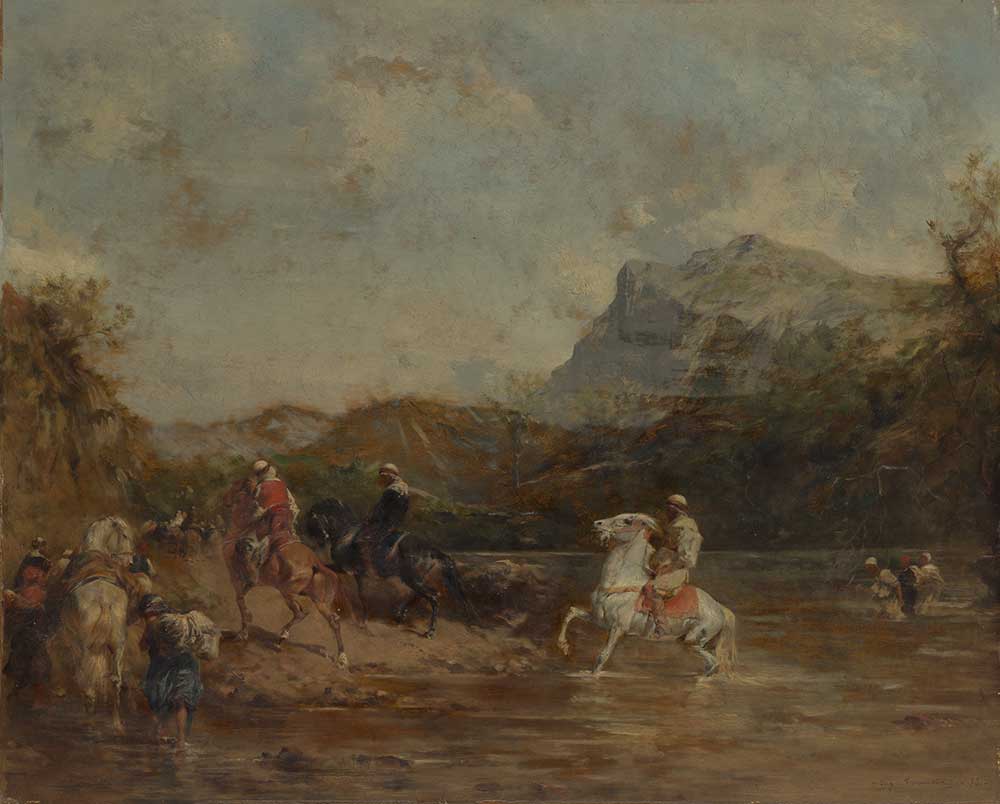Life’s no resting, but a moving.
—Johann Wolfgang von Goethe, 1795Sonia Shah Asks Why People Move
“Migration requires capital.”
Among migrants, Homo sapiens is king. And yet we have little consensus on why we move around the way we do. The findings of continuous migrations throughout our deep past have upended the idea that we moved only once in the past, attracted by empty lands, but have left the central question intact: Why? Why venture into the oxygen-starved Tibetan plateau or set off on outrigger canoes into the waves of the Pacific? Why leave the comforting certainties of life in Africa, where food and water and other resources abound to this day?
While the ecological role that wild migrants play is increasingly well documented, the motives and impact of human migration remain shadowy and ill-defined. Many popular theories locate the origins of human migration in nonmigratory behaviors, as if migration were essentially an accident, a by-product in our quest for other goals. The archaeologist J. Desmond Clark, for example, theorized that our first migrations began simply because we followed wild animals that moved. Our early ancestors hunted herds of wildebeests and antelope, he pointed out, and they moved seasonally over long distances. We followed, spears in hand, bellies empty, and in the process were drawn steadily farther and farther afield, turning us into accidental migrants.
Indeed, human movements continue to track those of wild creatures in modern times. In the seventeenth century, people from France migrated to North America in search of fur-bearing animals, whose pelts they’d use in their felted hats and the like, establishing the colony of New France in Canada. In the late eighteenth century, people from the Azores Islands migrated to New England, following the whales they hunted, establishing still-extant Portuguese communities in Massachusetts. We moved in sync with the animals because our livelihoods depended on their fur and flesh.
Most of our livelihoods no longer depend directly on animals and their movements, but all the same we still move in order to secure the economic sustenance they once provided us. Most every migrant could accurately describe their movements as motivated by the desire for work and economic security. And their labor is one of their most consequential impacts, adding billions of dollars to the economies of the countries they enter. Because so many send money back to their relatives and friends left behind, migrants’ labor adds billions of dollars to the countries they left as well. International migrants send more than $500 billion to their home countries every year, a flow of money that steadily redistributes wealth across borders. For some countries, these so-called remittances from migrants living overseas form sizable proportions of their GDP. According to data from the World Bank, remittances account for around 20 percent of the GDP of Lebanon, Nepal, and Moldova.
Still, our migration patterns cannot be defined solely as a product of the search for jobs. Economists have tried. In one formula, neoclassical economists calculated the likelihood of migration based on the difference between wages here and wages there: ER(O) ffl [PI (t)P2(t)YOt) − P3(t)Yo(t)]ertd − C(0). It looks more like the way to calculate the rate of nuclear fission than the probability of a messy human endeavor such as migration. And it doesn’t actually work.
Other popular theories about the origins of human migration suppose that some systematic change in the climate triggered our first movements out of Africa. Some, presuming migration to be an act of desperation, imagine it must have been a sudden, catastrophic event. The eruption of Mount Toba in Indonesia 74,000 years ago, for example, blanketed the skies with ash and depressed global temperatures for millennia. Perhaps that long volcanic winter “precipitated a desperate search for new food and land,” as Siddhartha Mukherjee put it in his popular history of genetics.

Arabs Crossing a Ford, by Eugène Fromentin, 1873. The Metropolitan Museum of Art, Catharine Lorillard Wolfe Collection, bequest of Catharine Lorillard Wolfe, 1887.
The migratory response to future environmental change is similarly cast as a last-ditch one, forced by catastrophe. In white papers and articles, national security and foreign policy experts issue predictions about how the disruptions and dislocations of climate change will affect migration. Food and water shortages will lead to instability, which will force migrants into motion, leading to more instability. Catastrophic floods and expanding deserts will force whole communities to pick up and leave. Rising seas will inundate millions of homes, forcing their residents to flee. By translating each “unit” of climate change into a proportional additional unit of migration, as the geographer Robert McLeman put it, experts such as the environmentalist Norman Myers estimated that by the mid-twenty-first century, climate change will create an army of 200 million environmental refugees, who will scour the planet. Migration will be “one of the gravest effects of climate change,” the Intergovernmental Panel on Climate Change noted, “one of the most dramatic consequences of global warming.” Such climate-driven migrations could even lead to civilizational collapse. According to their assessments, it has happened before.
But perhaps migration takes hold during periods of opportunity, not crisis. It’s possible that our restless ancestors, rather than reluctantly escaping from bad conditions, capitalized on good ones. The earth’s orbit wobbles on timescales of tens of thousands of years, the rotations switching from elliptical courses to circular ones. These orbital shifts change the angle and strength at which the sun’s rays hit the planet and so, over time, alter the planet’s climate. Such climate swings might have facilitated human migration, by turning the impenetrable deserts of North Africa, for example, into habitable savanna-like green corridors across which humans might have moved, like butterflies and clouds of pollen across the forests along the Savannah River. Suggestively, computer modelers from the University of Hawaii have found that orbital climate changes correspond with the pulses of human movements out of Africa.
Like butterflies and wolves, human migrants change the ecosystems they enter. People who decide to migrate are not a random cross section of the population, like those found perusing the aisles of a grocery store or wandering around a train station. Whether it’s money, skills, connections, or stamina, migration requires capital. Those with no capital, such as the very poor, cannot easily afford to undertake it. Nor can those whose capital derives from land ownership, aristocratic lineage, or titles. They have wealth and status, but they can’t take it with them.
Instead, social scientists have found, migrants tend to be the kind of people who don’t have big bank accounts or landholdings or titles but are rich in good health, skills, education, and social connections with people in other places. Their capital is portable. Demographically, in other words, they’re the kind of people who are “the bedrock of successful communities,” McLeman notes. They’re working people from the middle classes, younger and better educated than their nonmigrant peers, and more likely to hail from societies on the middle rungs of economic development. They’re healthier, too. Public health experts have documented what they call the “healthy migrant effect,” that is, the fact that migrants experience lower mortality rates than the host populations they enter. It’s especially striking considering that the newly arrived live in worse conditions and have less access to health care than the already resident, and most hail from poorer countries to boot. One study found that immigrants to the United States, Canada, the United Kingdom, and Australia had lower rates of chronic disease and obesity than comparable native-born residents. Most smoked less, too.
Their movements create social phenomena with their own self-perpetuating momentum. They move in stepwise fashion, from the countryside to the city, from cities across state borders, from nearby countries to ones farther afield, sometimes within a lifetime, other times, like the monarch butterflies that take four generations to migrate from Canada to Mexico, over the course of generations.
The movements of pioneer migrants pave the way for others to follow. As they arrive, they strengthen migrants’ social networks, lowering the cost of migrating for others. Pioneer migrants like my parents, who knew not one soul in the United States before they arrived from Mumbai, helped bring over my cousins and aunts and uncles and even some of their friends, providing them with a place to crash, tips on finding jobs, and rides to the specialty grocery stores where they could buy oily jars of mango pickles and skinny green chilis. The remittances and other support they send tether them to the places they left like fragile silken threads.
Migrants bring new cultural practices, recipes, and ways of living and thinking into the societies they join, injecting novelty into insular populations. And very quickly, unless the host society bars them, they integrate with the locals. Even as fire and fury are directed at newcomers and the economic and cultural disruptions they cause, our mongrel societies can and do rapidly assimilate the migrants among us. Within a generation, social, economic, and health indicators that distinguish immigrants from locals—the number of babies they have, the kinds of jobs they take, their levels of educational attainment, the diseases they suffer—converge. In one study of immigrants in the United States, all the immigrant-native differences that economists could discern vanished within a single generation.
The arrival of migrants in coming years will undoubtedly be disruptive to communities, even as they replenish them with new minds and bodies. In the past, human migrations have flowed more rapidly from east to west than from south to north, as evidenced in the pattern of genes in populations. In the new era, that circulatory pattern will likely switch, flowing from south to north along the gradient of our warming planet. The pace will be faster. Migrations will unfold over years and decades, not centuries and millennia.
But the next great migration will not unfold as an unstoppable physical phenomenon, like a cold front sweeping in from the north. There is no straightforward equation between environmental disruption and migratory effect.
The past seven thousand years of human migration unfolded under a globally stable climate, with the average global temperature ranging just 0.5 degrees Celsius. That has now changed. Since the Industrial Revolution, the average global temperature has risen by 0.8 degrees Celsius, bringing longer droughts, stronger storms, and more catastrophic wildfires. More of us than ever before will reach the threshold of the migration ratio, when our generation time eclipses the period of stability we can expect from the places we live in.
But as the next great migration dawns, the relevant question to ask is not why people migrate. Migration is a force of nature, rooted in human biology and history, along with that of the scores of other wild species with whom we share this changing planet. Over the long history of life on earth, its benefits have outweighed its costs.
The relevant question to ask is what we are going to do about it.
From The Next Great Migration: The Beauty and Terror of Life on the Move by Sonia Shah. Copyright © 2020 by Sonia Shah. Used with permission of Bloomsbury Publishing Inc.
Sonia Shah
From The Next Great Migration. The daughter of Indian immigrants, Shah was born in New York City in 1969 and studied journalism, philosophy, and neuroscience at Oberlin College. She is the author of five books and has also written for publications including the New York Times and Scientific American. “Invasiveness is not the sole province of alien species arriving from afar: so-called native species can become invasive, too,” Shah told an interviewer in 2021. “Nonnative species have been blamed for being invasive the way that immigrants have been blamed for causing crime.”





